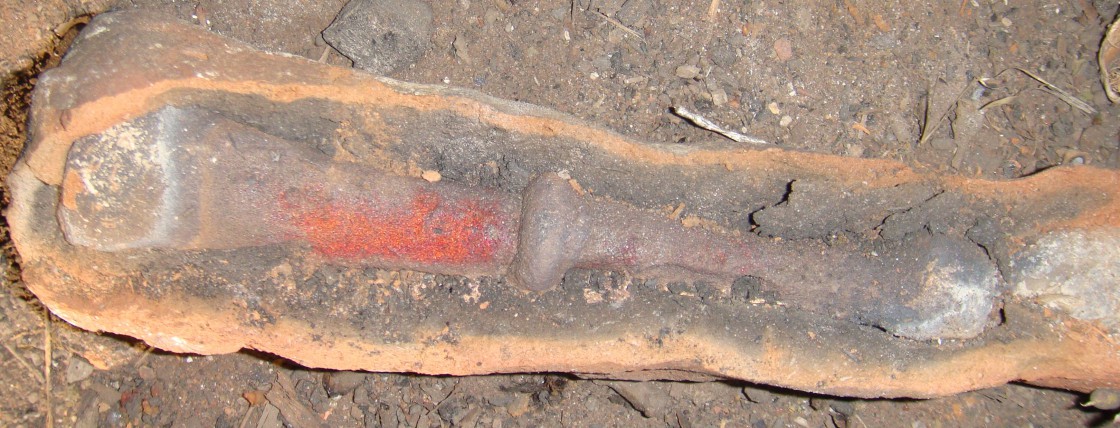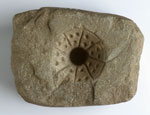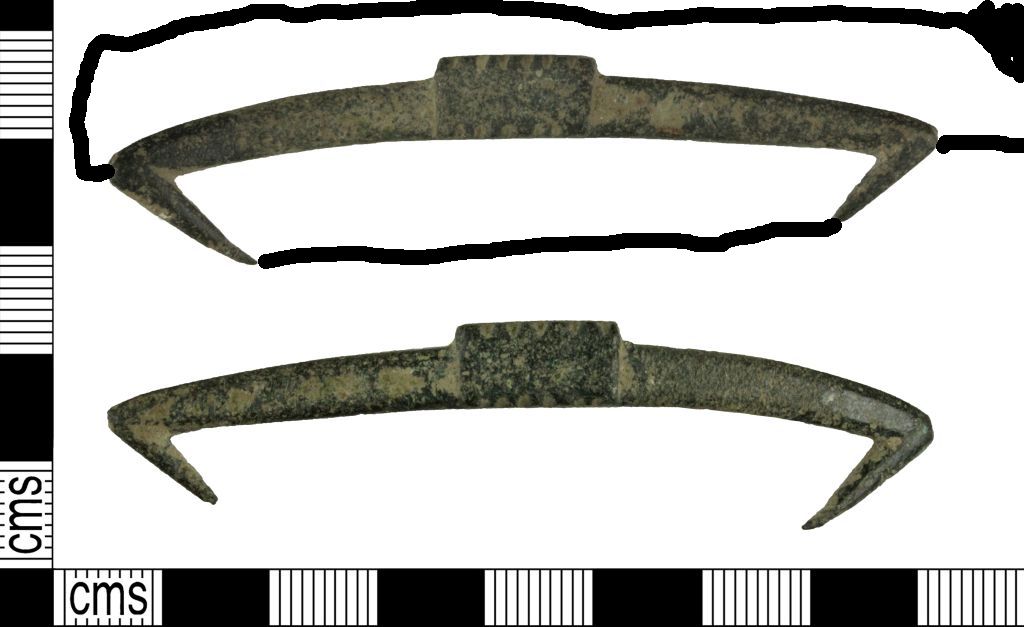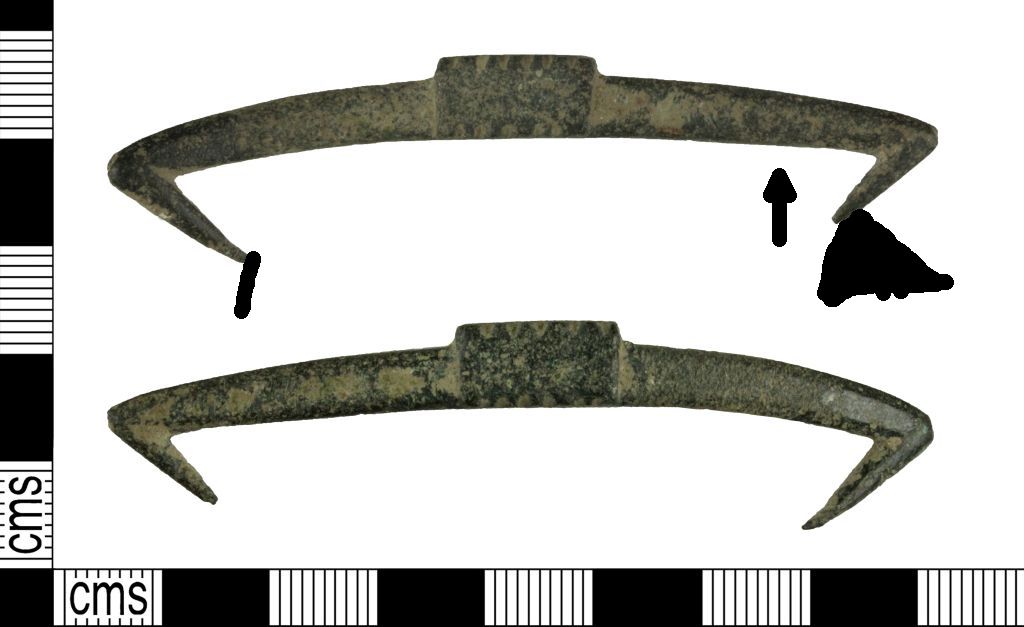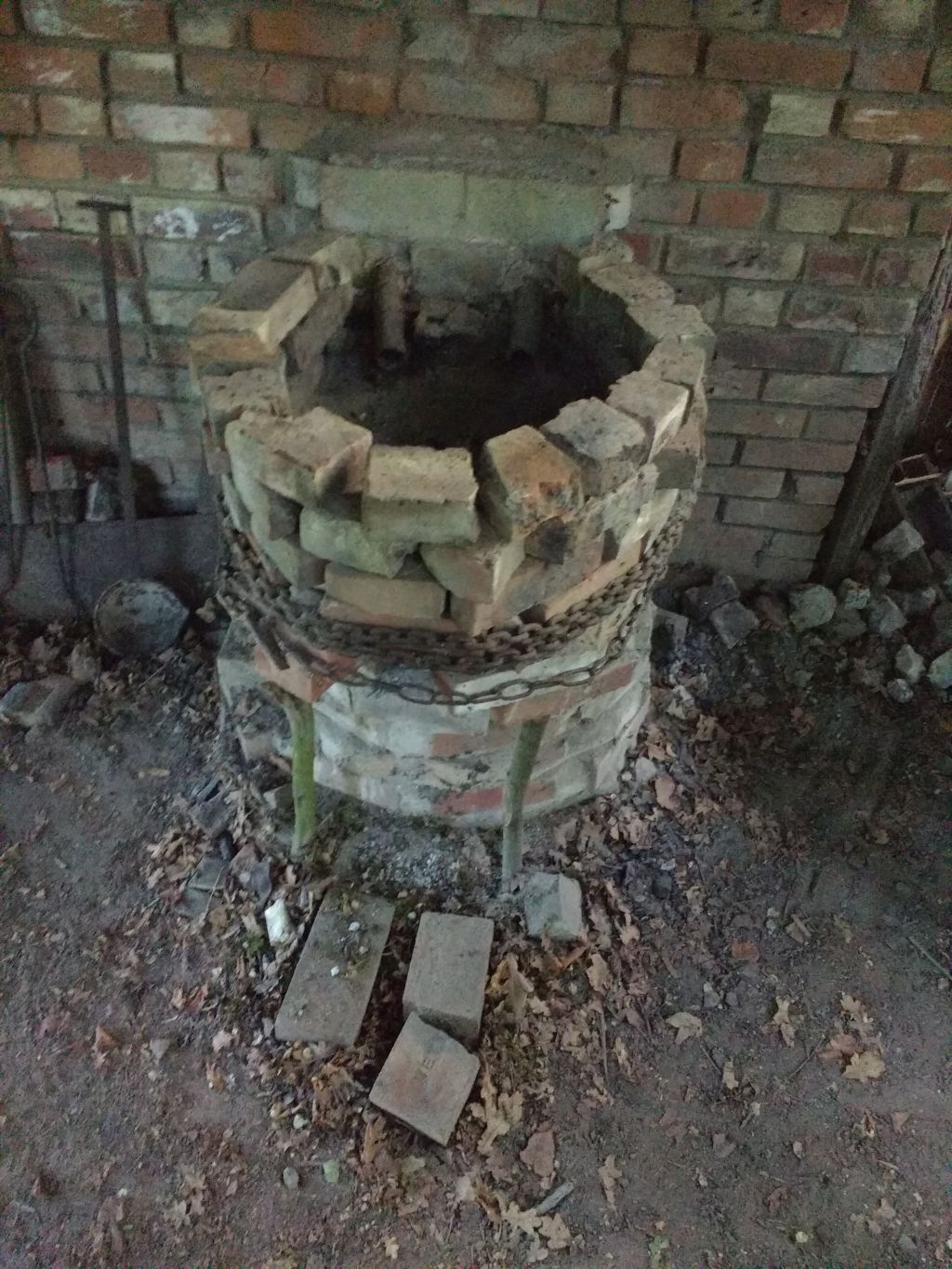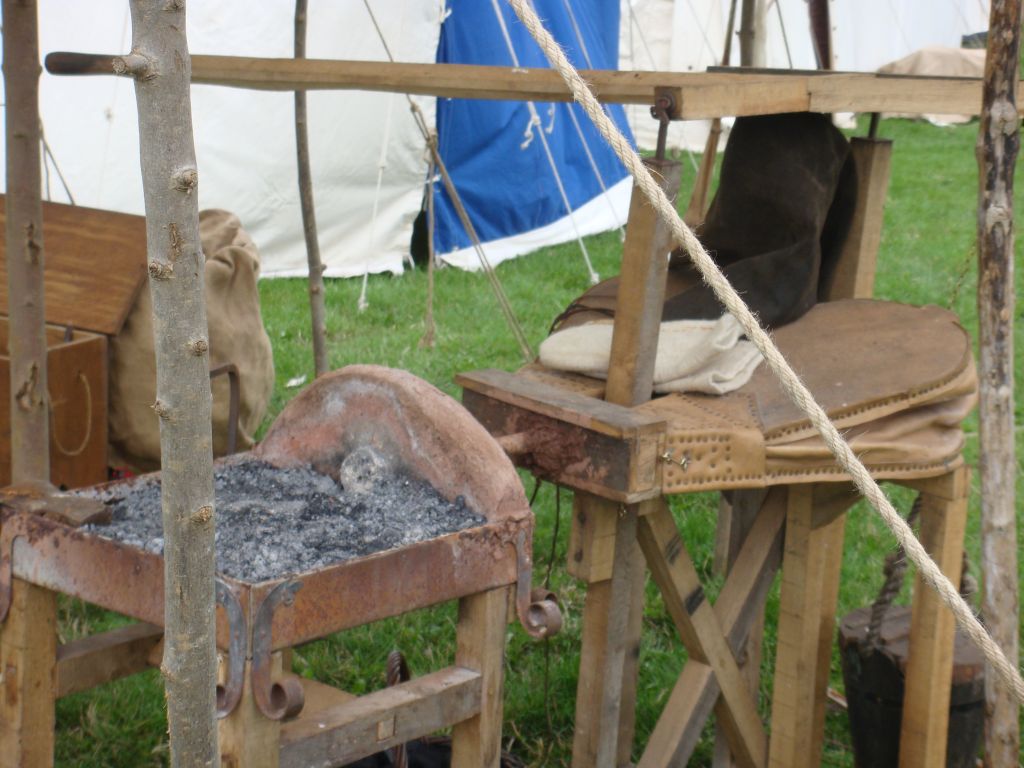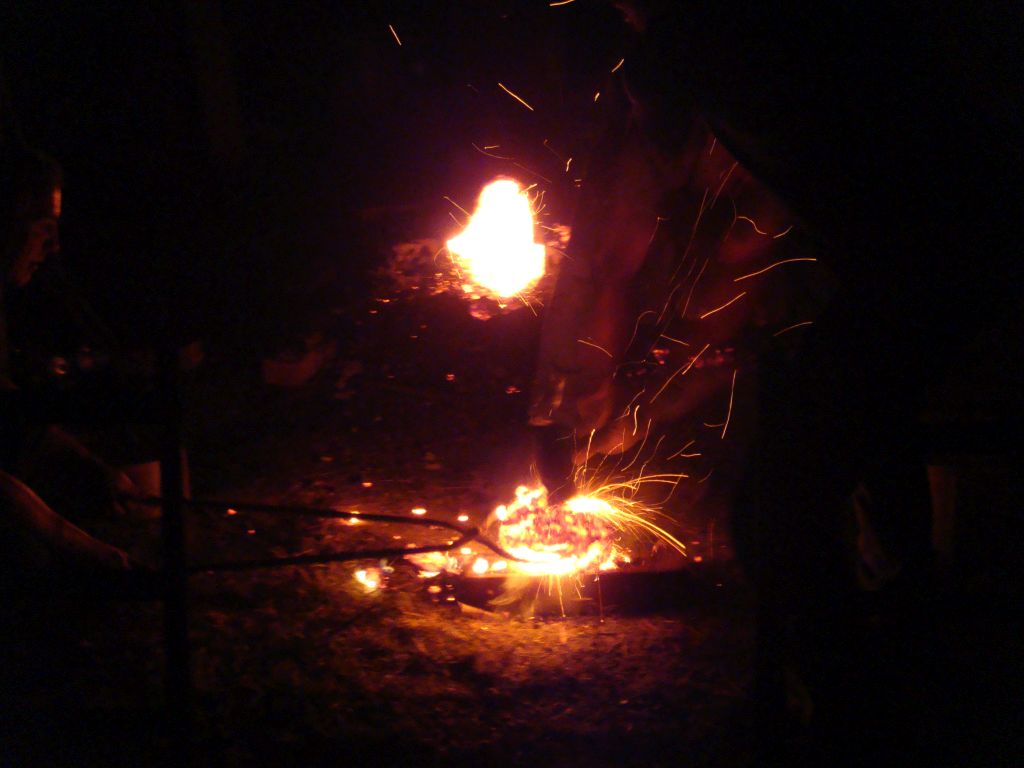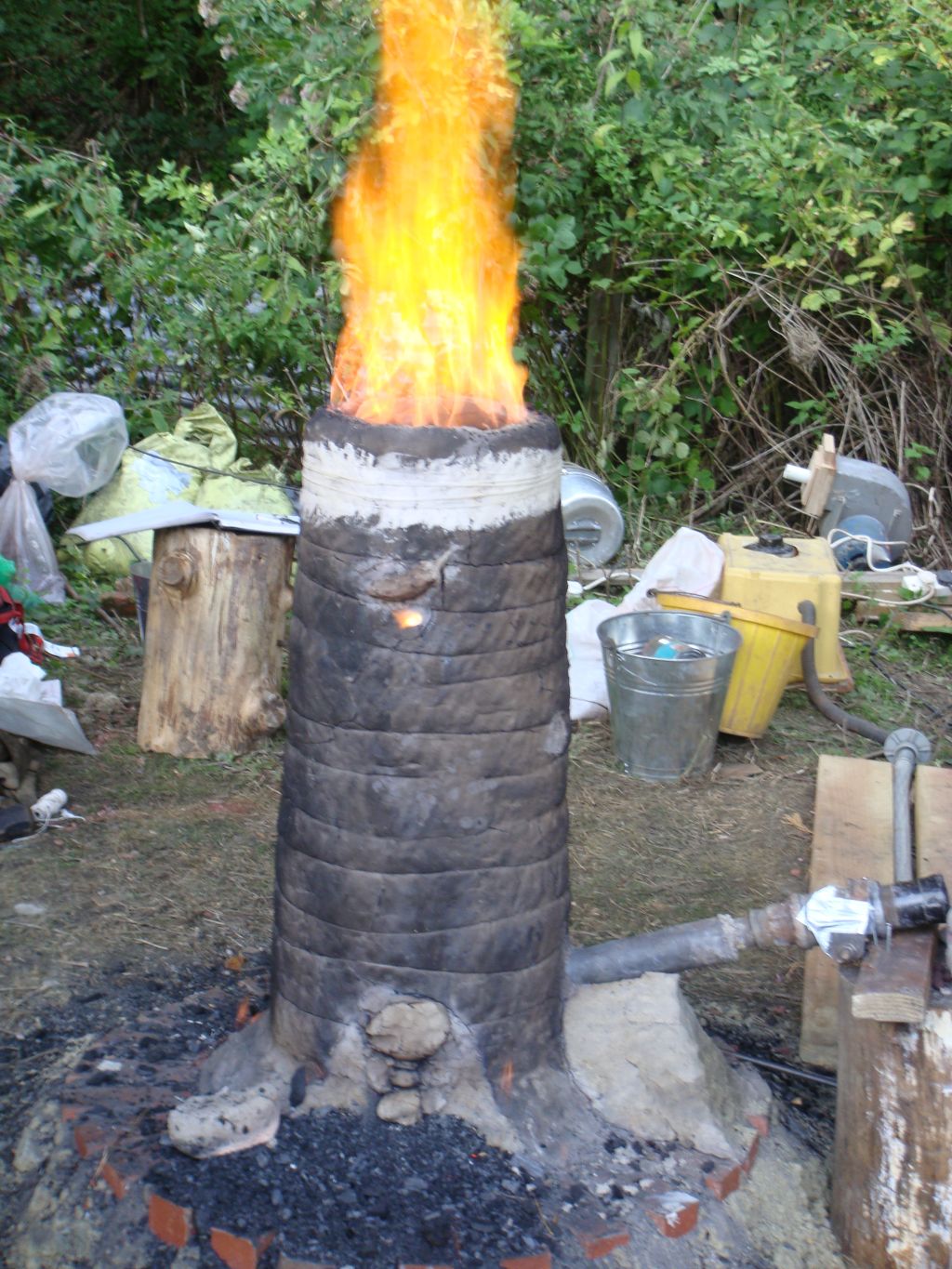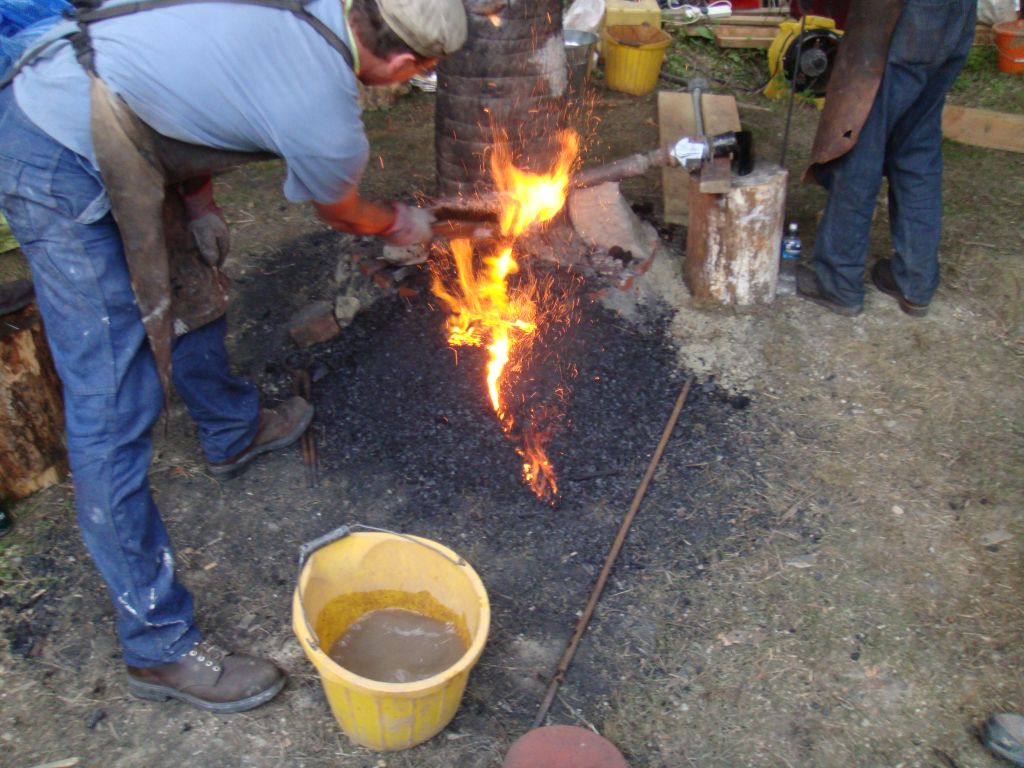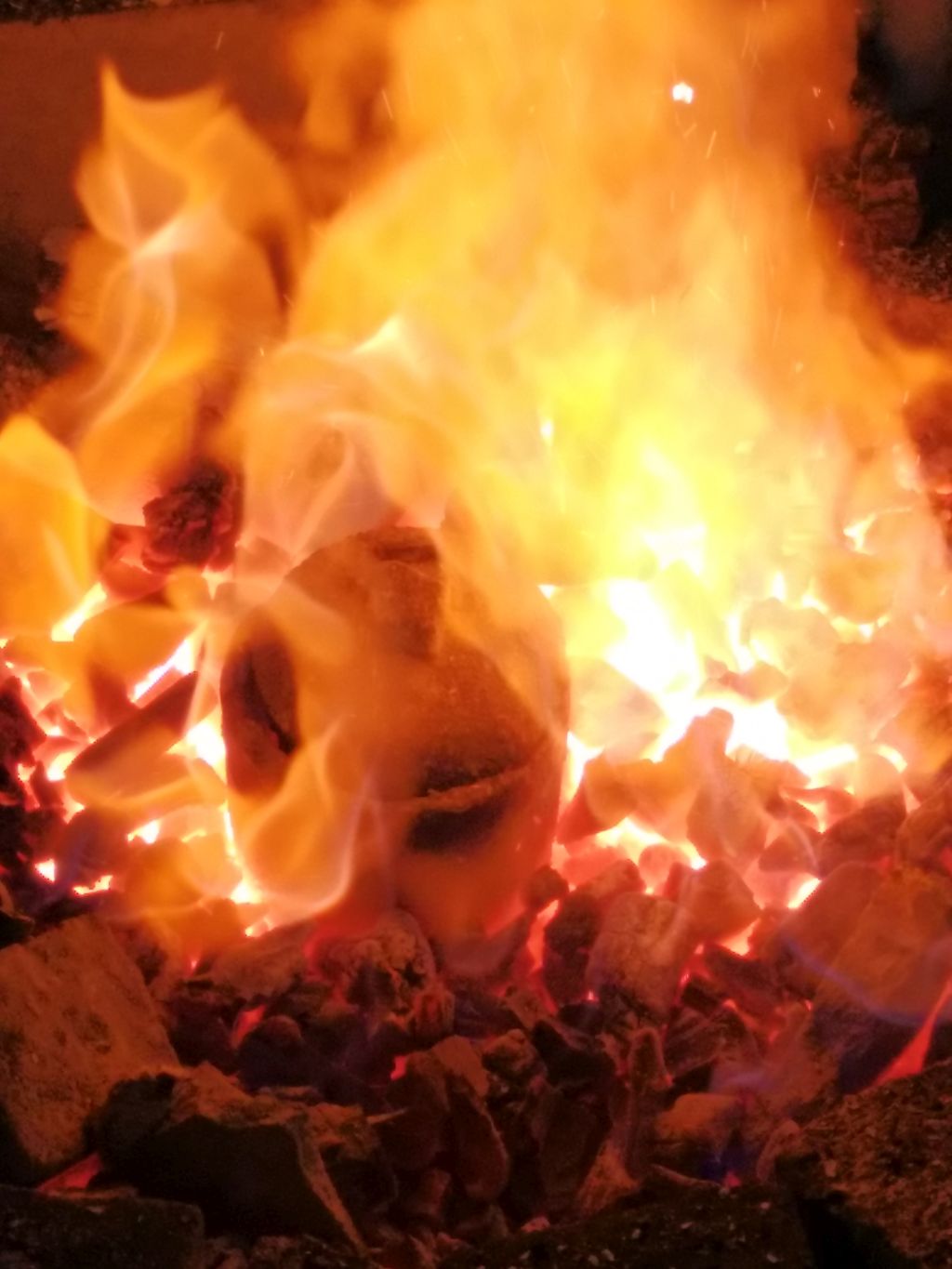I was reading a new acquisition, a book about furnace design and construction, when I noticed that it had a chapter on furnace strength and problems with furnaces, so I naturally wondered how it compared to historic reverberatory furnaces and their construction. Basically, a reverberatory furnace is where the fuel is burnt at one end, and usually by a sort of chimney effect, hot air and gases are brought over the top of the metal to be melted, the heat reverberating from the roof of the furnace. I really want to build and operate one to make copper alloy castings, but that is quite a big project.
These two photos show top and side view of Biringuccio’s reverberatory furnace design:
This type of furnace goes back to the 15th century or earlier in Europe, probably around 1500 in England and Scotland. It is built with bricks and clay and mortar and I think should end up with a lot of movement of the bricks in the roof as they expand and contract with the furnace heating up and cooling down, potentially causing various problems. As it says in Industrial Furnaces, Vol 1, by Trinks and Mawhinney, published in 1961 (5th edition, first came out in 1923), page 292, this first quote not necessarily covering reverberatory furnaces but is I think useful to note,
“… it is desirable to consider the places where failure is most likely to occur. Prominent among such places are roofs. Wherever material spans an opening, there must be tension in some part of the covering. Because hot refractories are extremely weak in tension, it is usually taken up by cold steel lying outside of the furnace. The refractory part of a roof can then be put wholly into compression.”
It carries on in page 293, more relevant to our needs – “Between room temperature and furnace temperature of 2200F, fireclay bricks expand about 0.075 in. per ft, or about 0.6%. The inside of the arch becomes longer by that amount, while the outside maintains practically it’s original length. Several things can happen under the influence of this expansion. The abutments can be pushed apart, the bricks can be compressed, or the arch can rise.”
Page 296 – “It may be stated however, that roofs of heating furnaces seldom fail from crushing of the arch bricks. Occasionally a very hot luminous flame melts an arch down; in other cases, ash is blown against the roof, sticking to it, and acting as a flux which causes the roof to melt; but as a rule, the rather rare collapsing of an arch is due to other causes, the most common of which is the yielding of the abutments (Skewbacks), and pinch spalling.”
(The spalling seems to result from rapid cooling of the bricks so different areas contract at different speeds so surfaces flake off, if it happens often enough the bricks lose strength)
This prompted me to look at the main historical sources I know of about reverberatory furnaces and more importantly, I happen to s in English translation. These are the works by Biringuccio (1540) and Cellini (1568 or so), both of whom used reverberatory furnaces in the 16th century. I don’t know of any other accessible sources for the period, and there are not many after either although I am sure they were written about. (Makes note to see if early modern sources can be found) So I read through the relevant sections of both to see what they say about the pitfalls of building a reverberatory furnace.
Cellini is not much use, declining to give a drawing of a furnace, then spending a lot of words describing how to make the very important floor of the furnace properly so it does not break under the force of the liquid metal. When it comes to the roof, he merely wrote “After the bed you build up the vault with similar bricks in the same way, … “
He is very picky about the properties of the bricks that you must use, so we can assume the ones he wants us to use do last well in the heat. Most interestingly, his design seems to let the flame and such out the far end of the furnace at the roof height. More modern designs assume you have a chimney of some sort at the far end of the furnace away from the firebox.
Biringuccio is also not much use, not describing any particular issues with roofs of furnaces.
He wrote:
“This is made of baked bricks, or of crude ones if desired or of suitable fire resistant stones. … (2 pages later) I have sometimes made them with bricks and laid them with the white clay that glassmakers use for making their pots and furnaces. Peperino also servers very well and a black rock flecked with white spots of the talc inside, whoe name I cannot tell you but it is found in Valcomenica in the Brescian region, …”
The vault itself is described thus:
“Thus built in this shape, I have had the vault begun not only over the firebox but also over the place for the bronze. I have taken pains to arrange that the vault of the firebox should be somewhat lower than that of the furnace, and that the aforesaid convex should be somewhat lower than that of the furnace, and that the aforesaid convex be commenced as desired from the part of the wall where it abuts a little above the level of the arches, curving in such a way that all the flamed, beating against it, press against the opening of the window that leads into the furnace. Likewise I have also had the vault made low above the taphole, so that when the flames are beaten back they may fall forcibly upon the metal.”
But that is about it. Nothing useful, no personal experiences or anything. At the moment, it looks like there wasn’t much of a problem with such furnaces and their roofs.
There is of course a clear assessment that you need furnace bricks which will survive the fire, and it is implied that if you do not, then things will go very wrong. But then if you use the correct bricks then things will go well and your furnace will work. Moreover if you look at the thickness of the walls in the drawings near the top of the post you will see the furnace is intended to be very strong and therefore should resist the walls being pushed apart by the expanding bricks in the vault, even if Biringuccio doesn’t make much of it.
Of course one difference is that nowadays we build to last and to minimise maintenance. Back then I suspect they rebuilt parts of the furnace after every few firings but finding any evidence of this is difficult. Also, if you did carefully choose the right stone or bricks to make it from, and built it well, there would be no problem with the roof pushing the side wall out, or of spalling. A roof to keep the rain off would definitely be a good idea though, but it seems that such a weak spot in a furnace was not a major issue or it was assumed you would add a roof of tiles or temporary one of wood.
Indeed I have read of one in Italy I think, which was in the basement of a large building, and therefore completely protected from the weather.



